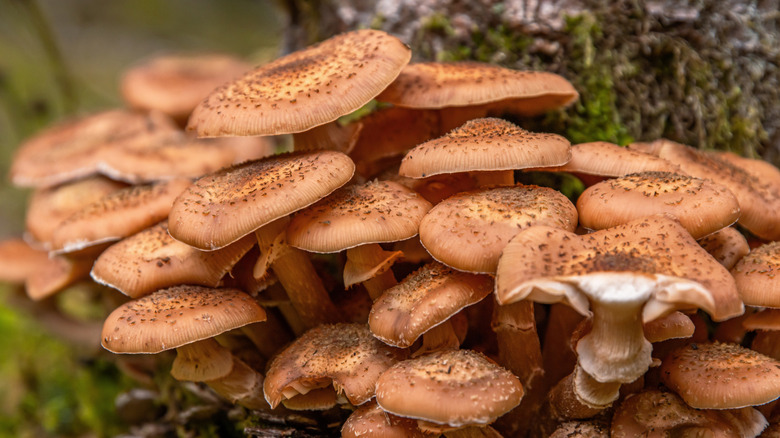Mushrooms Growing On Your Trees? Here's What It Means (And When To Panic)
Mushrooms commonly grow in lawns and gardens; you've likely seen mushrooms cropping up on your lawn after a long period of rain. Mushrooms are the visible fruiting bodies of fungi. They provide an essential service to the ecosystem by breaking down dead and decaying matter and returning nutrients to the soil, and when they grow in the soil around your trees, they actually help the trees by providing these nutrients. But what if these little fungi start to appear on the surface of the trees themselves?
Mushrooms emerging from a tree can indicate internal decay and disease. This can occur because the tree was already sick, creating the perfect opportunity for mushrooms to move in. It can also happen to previously when trees or shrubs are injured by winter conditions, pruning, broken branches, or the blades of a lawn mower. Decay caused by mushrooms can make your tree structurally unsafe, so learning what to do if your tree is affected by mushrooms and how to prevent it is essential to growing gorgeous, healthy trees and maintaining a safe property.
Mushrooms on trees indicate some deeper problems
Mushrooms at the base or on the trunk of your tree can be a sign of internal decay. Certain species of mushrooms, like honey fungus (Armillaria mellea) and chicken of the woods (Laetiporus sulphureus), are especially harmful to trees. When a plant is infected with honey fungus, it's likely a sign of rotting roots. Chicken of the woods attacks the center of a tree's trunk, causing a condition called brown heart rot.
If mushrooms are only growing on your tree's branches, simply knocking off visible mushrooms won't solve the problem, as fungi exist below the surface of the tree. If you catch fungus early, you may be able to treat it with homemade sprays made with baking soda, vinegar, or neem oil, or chemical treatments. More advanced infections weaken a tree's structural integrity, making it likely to collapse, so you should check for signs of structural decay. Look for leaning, unusual cavities or cracks, and a hollow sound when the tree is knocked. If the tree is weak, it's best to have a professional arborist assess its condition. Tree removal may be necessary to keep your home and family safe.
Fortunately, there are steps you can take to prevent fungus from infecting your trees. The same DIY fungicides used to treat an early fungal infection can be used for prevention when applied weekly or after rainfall. Mushrooms thrive in moist conditions, so avoid overwatering and keep mulch off the trunk.

